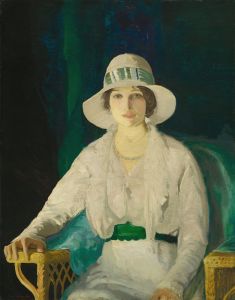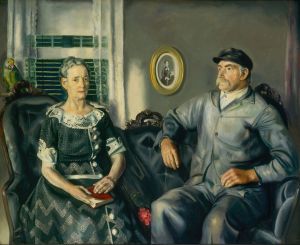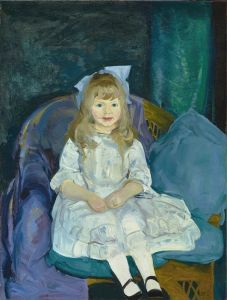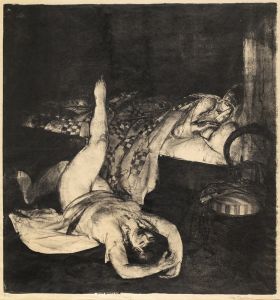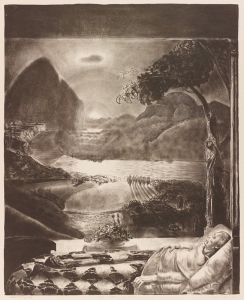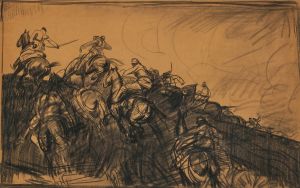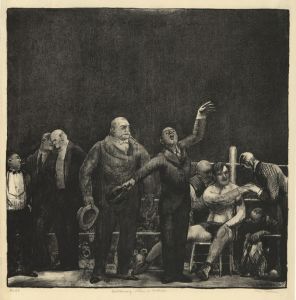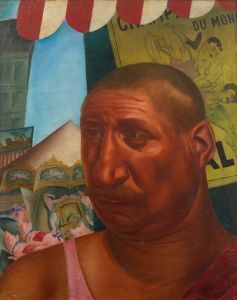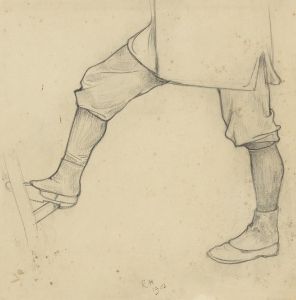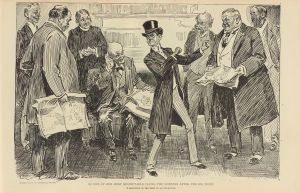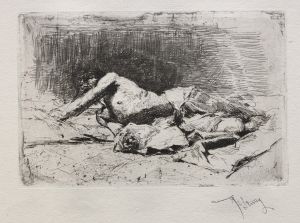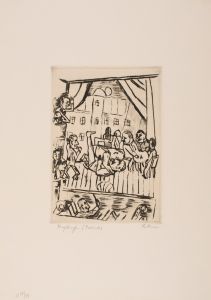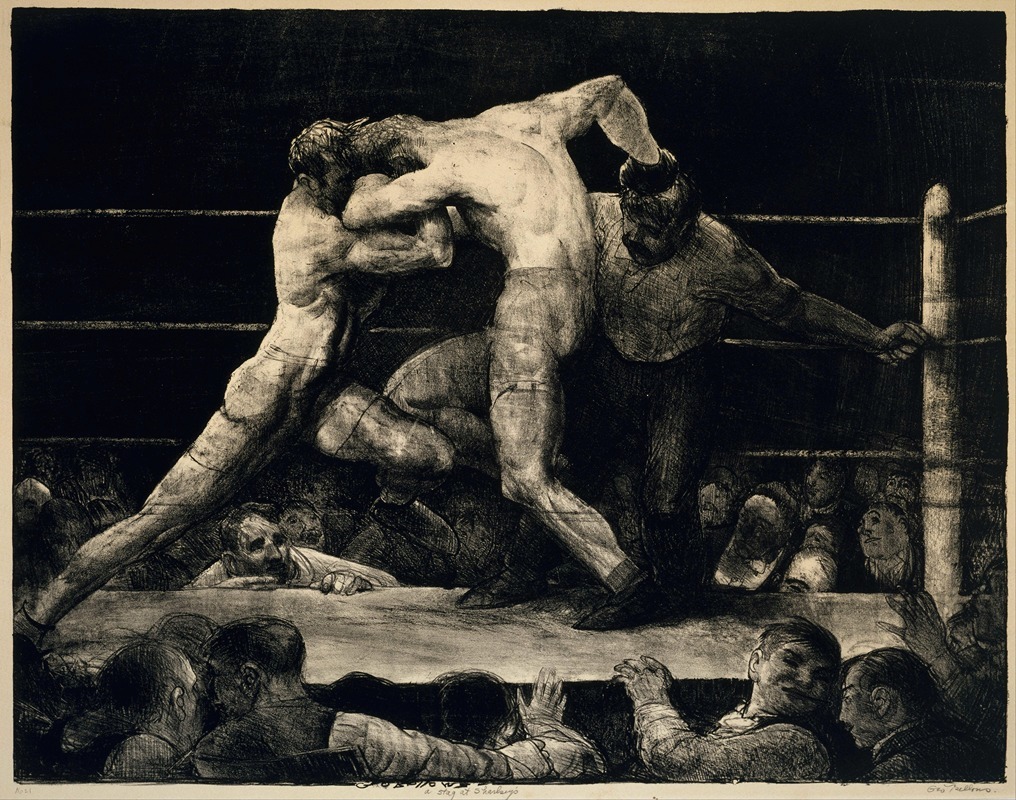
A Stag at Sharkey’s
A hand-painted replica of George Wesley Bellows’s masterpiece A Stag at Sharkey’s, meticulously crafted by professional artists to capture the true essence of the original. Each piece is created with museum-quality canvas and rare mineral pigments, carefully painted by experienced artists with delicate brushstrokes and rich, layered colors to perfectly recreate the texture of the original artwork. Unlike machine-printed reproductions, this hand-painted version brings the painting to life, infused with the artist’s emotions and skill in every stroke. Whether for personal collection or home decoration, it instantly elevates the artistic atmosphere of any space.
"A Stag at Sharkey's" is an oil painting created in 1909 by the American artist George Wesley Bellows. Bellows, a prominent member of the Ashcan School, is known for his vivid depictions of urban life and his ability to capture dynamic movement and raw energy in his works. This painting is one of his most famous pieces and is celebrated for its dramatic portrayal of a boxing match.
The painting depicts an intense, action-packed moment in an illegal boxing match held at Sharkey's Athletic Club, a private establishment in New York City. During this period, public boxing matches were illegal in New York State, but private clubs like Sharkey's circumvented the law by hosting "stag" fights, which were exclusive events for club members. Bellows, who was deeply interested in the gritty realities of urban life, found inspiration in these underground matches.
In "A Stag at Sharkey's," Bellows captures the raw physicality and chaotic energy of the fight. The composition centers on two boxers locked in combat, their muscular forms rendered with dynamic brushstrokes that convey movement and tension. The figures are illuminated by stark lighting, which emphasizes their physicality and the sweat and strain of their exertion. Surrounding the fighters is a crowd of spectators, whose faces are animated with excitement, intensity, and sometimes grotesque expressions, reflecting the visceral nature of the event.
Bellows employed a dark and moody palette, dominated by browns, blacks, and grays, punctuated by flashes of white and red. This color scheme enhances the dramatic atmosphere of the scene and draws attention to the central figures. The painting's loose, expressive brushwork contributes to its sense of immediacy and vitality, making the viewer feel as though they are part of the crowd witnessing the fight.
"A Stag at Sharkey's" is often interpreted as a commentary on the primal and violent aspects of human nature, as well as the social dynamics of early 20th-century urban life. The painting exemplifies Bellows' ability to merge realism with a sense of drama and emotion, capturing not only the physicality of the scene but also its psychological intensity.
Today, "A Stag at Sharkey's" is housed in the Cleveland Museum of Art, where it remains a key example of Bellows' work and a significant piece of American art from the early 20th century.





